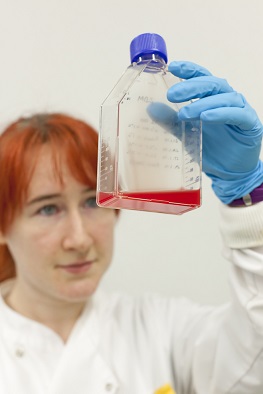St George’s scientists reveal a world influenced by parasites
Published: 29 November 2019
The latest talk in our Spotlight on Science series welcomed people from across London and beyond to an evening of parasitic discovery.
Three scientists from St George’s Institute for Infection & Immunity promised a night exploring how parasites have played a part in wars, industries, the rise and fall of empires, and still to this day divide us along poverty lines.
Dr Cathy Moore kicked off the evening introducing the audience to several of the “usual suspects” that are responsible for around one million deaths per year, worldwide:
- Hookworm – a parasite that enters the host’s skin and eventually finds its way to the intestines via the lungs. Here it will feed on the rich blood supply, causing anaemia, which in turn can lead to poorer performance in school and reduced earnings in later life.
- Schistosomiasis – a disease caused by flatworms called schistosomes. It can cause genital sores that increase the risk of HIV infection in adults by three to four times.
- Neurocysticercosis – caused by eating food contaminated with tapeworm eggs, this condition is one of the leading causes of seizures and epilepsy worldwide.
- Leishmaniasis – transmitted by the sand-fly, this disease can cause visible sores on the skin, often leading to women being treated as social pariahs and becoming trapped in poverty.
- Malaria – five different species transmitted by mosquitoes, which are responsible for around 500,000 global deaths per year. In Malawi, 32.1% of average annual income among poor households is spent on malaria treatment.
Each of these parasites not only pose massive health challenges for their human hosts, but create a vicious cycle of infection, disability, poverty and further disease.

However, these conditions haven’t been able to attract the same amount of research funding as other comparable diseases, as today they mostly affect the “bottom billion” of the poorest individuals on the planet.
Benedict Davies, a PhD student focused on a particular species of malaria, gave the rundown on some of the more surprising elements of how these diseases have affected certain populations and their impacts beyond human health.
Nazi plots, slavery and civil war
Typically, malaria is most prevalent between the tropics, where mosquitoes carrying the parasite thrive and infect populations. But in the Second World War, it has been suggested that Nazi scientists attempted to bring the disease a little closer to home, attempting to use malaria as a biological weapon by flooding the marshes en route to Rome. Although this mostly resulted in increases in civilian cases of malaria as opposed to harming Allied forces.
In another surprising effect on the warfront, hookworm, which was brought to the US on slave ships, may have affected the outcome of the American Civil War.
“While the North had sturdy boots made of cow leather, the deer skin shoes of the South were far more likely to fall apart,” explained Davies. This made it more likely that the Southern troops would be infected with hookworm through their feet, potentially causing lethargy and leading to losses in battle.
Unfortunately the infection has returned to plague the lives of poorer communities in the Southern states of the US today, where lack of suitable footwear and pools of raw sewage appear to be contributing to this inequality.
Parasites continue to play their part in preventing the growth of communities around the world, but St George’s scientists are trying to find ways to reduce this burden on society.
Diagnosing and treating the culprits
Dr David Clark, the final speaker, chose to focus on how scientists are developing new techniques to better diagnose which specific parasites are causing people’s illnesses. Once the culprit is found, it’s then much easier to treat patients with the appropriate therapies.
One of the most effective methods to uncover the underlying cause of disease is to amplify DNA samples to try and find the specific patterns associated with different parasites. But more work needs to be done to create a point of care device – something that St George’s scientists are working on.
“We need devices that are more accurate, fast, portable, and inexpensive,” explained Dr Clark. With devices often having to reach remote regions, the new devices will also need to be durable enough to withstand the journeys to where they are needed.
The technology is developing at a great rate, and the latest equipment will build on existing designs so that multiple diseases can be identified in one go.
If we can diagnose and treat these conditions better than before, the most deprived communities on this planet could be freed to live their lives without the burden of playing host to these invading species.